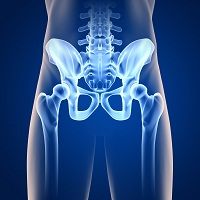Lidocaine Injection Holds Promise for Women with Chronic Pelvic Pain
Study results suggest that lidocaine injection might be better than ischemic compression in treating chronic pelvic pain in women.

A study in BMC Anesthesiology suggests that lidocaine injection might be better than ischemic compression in treating chronic pelvic pain in women.
The finding is potentially important because chronic pelvic pain (CPP), while a common condition among women of reproductive age, can be difficult to diagnose and treat, and its primary cause is not well understood. Earlier research has established that as many as 30% of cases may be originating from the trigger points in the abdominal wall muscle. When compressed, these trigger points cause referred pain. Typical treatment involves the use of a local anesthetic, but few studies have evaluated the effects of anesthetic injections into abdominal wall trigger points. In some countries, non-pharmacological treatments, including transcutaneous electric nervous stimulation (TENS), are also used.
The current study was a parallel group randomized controlled trial of 30 women of reproductive age with CPP and trigger points of the inferior abdominal wall. Participants with fear of needles, fibromyalgia, or neurologic or neuropsychiatric conditions, hypertension, and diabetes were excluded, among others.
Subjects were randomly assigned to one of two intervention groups. One group received an injection of 2 mL 0.5% lidocaine without a vasoconstrictor into a trigger point. In the other group, ischemic compression via physical therapy was administered at the trigger points three times, with each session lasting for 60 seconds, and a rest period of 30 seconds between applications. Both treatments were administered during one weekly session for 4 weeks. All subjects were evaluated at baseline and 1, 4, and 12 weeks after the interventions.
Clinical response rates and pain relief were significantly better at 1, 4, and 12 weeks for those receiving local anesthetic injections than ischemic compression via physical therapy. The pain relief of women treated with local anesthetic injections progressively improved at 1, 4, and 12 weeks after intervention. In contrast, women treated with ischemic compression did not show considerable changes in pain relief after intervention. In the local anesthetic injection group, pain threshold and tolerance improved with time in the absence of significant differences between groups.
“To our knowledge, this is the first randomized trial demonstrating the superiority of a local anesthetic for the treatment of the trigger points in the inferior abdominal wall of women with chronic pelvic pain even though this method has been proven to be effective in the treatment of other myofascial syndromes, and is similar to the effects of the lidocaine patch,” the study authors noted. “Since we selectively excluded subjects with comorbidities and other causes of chronic pelvic pain, we cannot confirm that this intervention, compared to those that had been applied by experts, works in the more complex ‘real-life’ setting. Thus, future pragmatic clinical trials are needed in order to confirm the effectiveness of this method in a wider variety of circumstances as well as assess whether it is better compared to techniques such as dry needling or acupuncture, for example.”